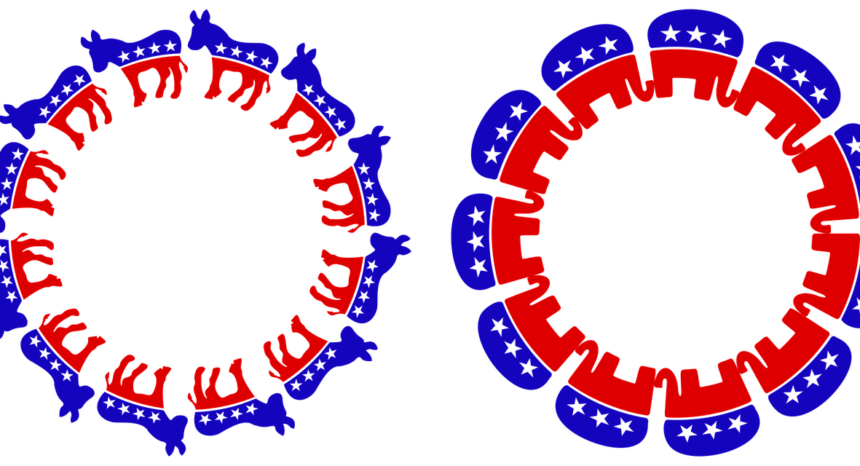One could reasonably argue that, aside from their ability to stimulate public interest, presidential debates are a bad idea. If their purpose is to provide U.S. voters a better understanding of their choice, there are far better formats. Then again, voters would be less interested in watching them, which takes us back to the point that the debates at least serve to create interest in the campaign. About 80 million viewers tuned in to the first general election debate between Donald Trump and Hillary Clinton in 2016, an audience level that’s beyond anything but the Super Bowl and the series finales of M*A*S*H* and Cheers.
Yet, debates are a poor way to judge what’s required of a president. When was the last time a president debated a foreign leader? The historical record doesn’t yield an example. The closest example is the now largely forgotten but then much ballyhooed “kitchen debate” between Soviet leader Nikita Khrushchev and future president Richard Nixon, who was then President Dwight D. Eisenhower’s vice president. It lasted only a few minutes but Nixon’s raised voice and finger pointing made it front page news.
Along with a clever sound bite, a raised voice and a point of the finger are also the formula for a successful presidential debate. The master of the formula, not surprisingly, was a former Hollywood actor. Ronald Reagan didn’t win the 1980 and 1984 elections as a result of the presidential debates, but his quips dominated the postdebate headlines. After a halting performance in 1984’s second debate that raised questions about his age and mental acuity, Reagan buried the story line with a well-timed and well-rehearsed sound bite. Said Reagan, “I will not make age an issue of this campaign. I am not going to exploit, for political purposes, my opponent’s youth and inexperience.”
House Speaker Nancy Pelosi urged Joe Biden not to participate in this election’s debates. Pelosi’s concern would seem misplaced given Biden and Trump’s previous debate performances. Biden performed ably in his 2008 and 2012 vice presidential debates, and Trump’s debate performances in 2016 were uneven. But presidential debates are not defined by the nominees’ ability to make thoughtful, coherent and sustained arguments. Style trumps substance. They are defined by brief moments of stupidity or one-upmanship that get amplified by the press.
Journalists have a larger influence on the public’s response to presidential debates than might be thought. One can hope that Fox’s Chris Wallace, who is moderating the first debate, doesn’t ask a question like that posed in 1988 to Michael Dukakis by moderator Bernard Shaw of CNN. Shaw asked Dukakis whether he would support the death penalty if his wife was raped and murdered. There was no answer that Dukakis could give that would prevent it from being a headline. If he said yes, he would have been attacked for reneging on his longstanding opposition to the death penalty. If he said no — which is was what he did say — he would appear heartless and uncaring of his wife.
The clearest example of press influence is a 1976 Gerald Ford – Jimmy Carter debate when, near the close of the debate, Gerald Ford overstated his belief (borne out by time) that the Soviet Union’s control of its satellite countries was less strong than commonly claimed. There is, Ford said, “no Soviet domination of Eastern Europe.”
Polls taken immediately after the debate showed that viewers didn’t attach much significance to the remark and postdebate polls indicated that viewers thought Ford had “won” the debate. Journalists saw it differently. They played up Ford’s statement as a blunder that had cost him the debate. At Ford’s press conference the next day, the first 11 questions were aimed at getting him to say that he had blundered. The feeding frenzy continued into the next day, by which time Ford’s 47-33 postdebate edge had flipped. Now, by a margin of 63-17, poll respondents thought Ford had lost the debate.
The first 2020 presidential debate is but a week away. The challenge for news outlets will be to try to capture the debate as a whole and not through the lens of its most sensational moment. Journalists have been following the campaign religiously for months and will not “see” the debate as the viewers “see” it. But they should try to put themselves in viewers’ seats. How do the candidates differ in their approaches to leadership? In their policy positions? In their understanding of Americans’ problems? In their fidelity to truth? It’s a harder story to tell than is one of a gaffe or clever remark but it’s a story that would better serve the voter’s interests.
Thomas E. Patterson is Bradlee Professor of Government & the Press at Harvard’s Kennedy School and author of the recently published Is the Republican Party Destroying Itself? Journalist’s Resource plans to post a new installment of his Election Beat 2020 series every week leading up to the 2020 U.S. election. Patterson can be contacted at thomas_patterson@harvard.edu.
Further Reading:
Amber E. Boydstun, Rebecca A. Glazier and Matthew T. Pietryka. “Playing to the Crowd: Agenda Control in Presidential Debates,” Political Communication, 2013.
Zijian Harrison Gong and Erik P. Bucy. “When Style Obscures Substance: Visual Attention to Display Appropriateness in the 2012 Presidential Debates,” Communication Monographs, 2016.
Newton N. Minow and Craig L. Lamay. Inside the Presidential Debates, 2008.
Alan Schroeder. Presidential Debates, 2000.
“U.S. presidential debates: 3 studies journalists should know about,” Journalist’s Resource, 2020


Expert Commentary